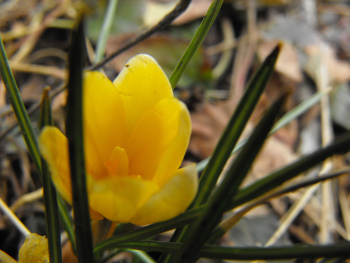
How to Plan Permanent Paths
 I'm still deeply entrenched in my Edible
Forest Garden book, thinking most recently about pathways. So
much of what I read in the book articulates what I've been learning
over the last couple of years as I lay out paths that do and don't work.
I'm still deeply entrenched in my Edible
Forest Garden book, thinking most recently about pathways. So
much of what I read in the book articulates what I've been learning
over the last couple of years as I lay out paths that do and don't work.
For example --- nodes. The book suggests that when laying out
permanent paths in a garden, you first draw a map with primary
destinations on it, places like compost piles, the entrance to another
part of the garden, and restful nooks. Then connect the dots to
create your main pathways. Lucy taught me this when I laid out a
grid of beds which didn't take into account the diagonal path she
wanted to take to get to the old house (a node) from the trailer
(another node). After many garden beds were trampled along her
diagonal, I gave in and created a main thoroughfare following her path,
with the result that we both got where we were going quicker and with
minimum soil compaction.
Path widths are also essential to plan out in advance. I made the
terrible mistake of making my paths far too narrow (about 1.5 - 2 feet)
in my first gardening enterprise. My new beds in 2008 had wider
paths between them --- about 3 feet to allow easy hauling of weeds and
such in the garden cart. This year, I'm starting to add four main
thoroughfares which are 4 to 5 feet wide, ways to get the golf cart
into each part of the garden.
By the time I finally tricked myself into closing the book last night,
it was late and the first Wood Frogs were chuckling their mating call
in the floodplain with one creaking chorus frog joining in.
Earlier, I stumbled up on the first tiny crocus of the year. Yes,
spring really is on its way!
Want more in-depth information? Browse through our books.
Or explore more posts by date or by subject.
About us: Anna Hess and Mark Hamilton spent over a decade living self-sufficiently in the mountains of Virginia before moving north to start over from scratch in the foothills of Ohio. They've experimented with permaculture, no-till gardening, trailersteading, home-based microbusinesses and much more, writing about their adventures in both blogs and books.
Want to be notified when new comments are posted on this page? Click on the RSS button after you add a comment to subscribe to the comment feed, or simply check the box beside "email replies to me" while writing your comment.
